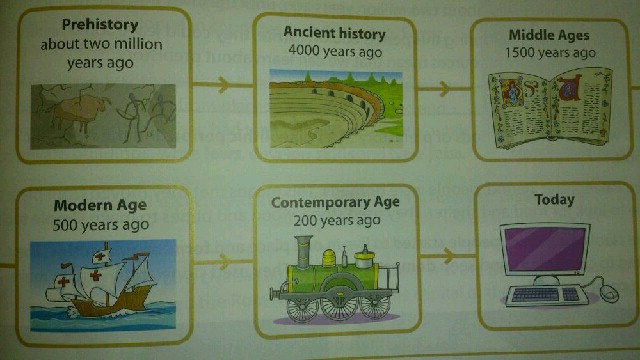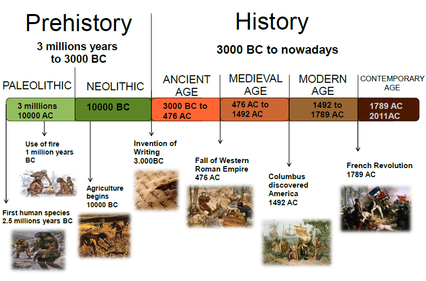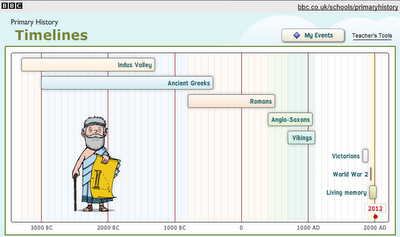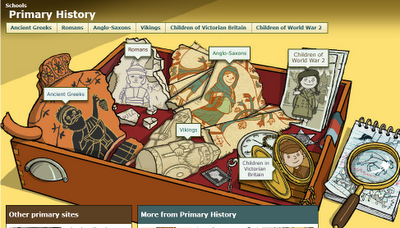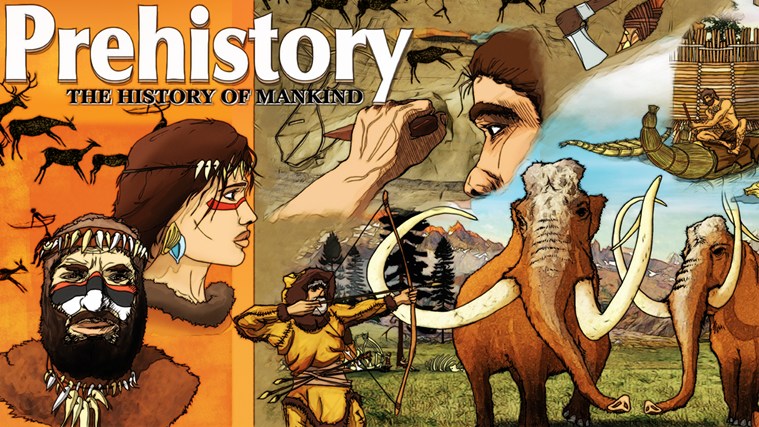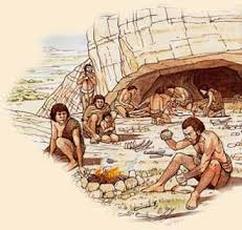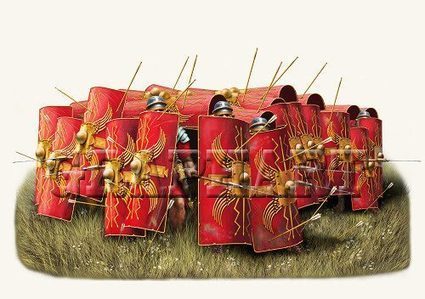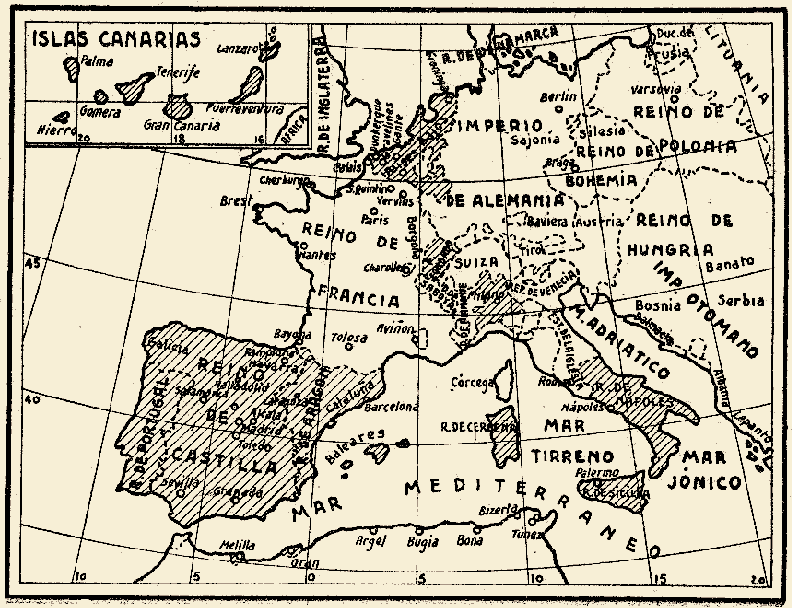In
this unit we are going to learn about history. We are going to learn
about how people lived in the past, and about some important events and
people in history.
History is everything that happened in the past. History is important because we can learn from the past. We can understand why things happen in our world and use this information to make our lives better.
We can use historical sources to learn about history. Historical sources are objects that give us information about the past. Historical sources can be photos, paintings, written documents, buildings or objects that people used in the past.
History is everything that happened in the past. History is important because we can learn from the past. We can understand why things happen in our world and use this information to make our lives better.
We can use historical sources to learn about history. Historical sources are objects that give us information about the past. Historical sources can be photos, paintings, written documents, buildings or objects that people used in the past.
We can use measurements of time to organize information about the past.
· A year is made up of twelve months. · A decade is made up of ten years. · A century is made up of one hundred years. · A millennium is made up of one thousand years. We can divide history into five main periods: Prehistory, Ancient history, the Middle Ages, the Modern Age, and the Contemporary Age. |
PREHISTORY
We
already know what history is, but what is prehistory? Prehistory is the
period from when the first humans existed about two million years ago,
until the invention of writing.
Although people living during this period couldn´t write, they could leave some historical sources. These historical sources mean that we can learn about prehistory. |
There are two main periods of prehistory: the Palaeolithic period and the Neolithic period.
In the Palaeolithic period, people were nomads. This means that they moved from place to place to look for food and shelter. They used stone, wood and bones to make simple tools. In the Neolithic period, people started to live in one place and form communities. They started to grow crops and keep domestic animals. They used stone and metal to make more complex tools. |
ANCIENT HISTORY
Ancient
history began more than four thousand years ago, when people invented
writing. During this time, the first civilisations developed in
countries such as: Greece, Egypt, China and Mexico.
People in these first civilisations lived together in communities and didn´t have to move from place to place to find food aand shelter. This meant that they had time to build cities with public and private buildings, write laws, develop skills and have jobs.
Civilisation: (noum) a society that shares the same culture and institutions.
People in these first civilisations lived together in communities and didn´t have to move from place to place to find food aand shelter. This meant that they had time to build cities with public and private buildings, write laws, develop skills and have jobs.
Civilisation: (noum) a society that shares the same culture and institutions.
E.g. Egyptian hieroglyphs
Ancient Egyptian Hieroglyphics |
One
of the most important civilisations in ancient history was the Roman
Civilisation. Roman territory was called the Roman Empire and the
capital of the Roman Empire was Rome. The Romans had a strong army and
this helped increase their territory. The Romans arrived in the Iberian
Peninsula about two thousand years ago.
A) The Romans built outdoor theathres called amphitheatres where people watched fights between gladiators, and between gladiators and wild animals. B) The Romans built stone roads to connect cities. C) The Romans built bridges over rivers. D) The Romans built aqueducts to carry water from rivers and lakes to cities. |
THE MIDDLE AGES
The
Middle Ages began about 1500 years ago. During this period, two
civilizations lived in the Iberian Peninsula: Christian civilization and
the Islamic civilization.
The Christian civilization in the Iberian Peninsula began when the Romans arrived. Christian Spain was divided into areas called kingdoms. Each of these kingdoms had a king. The kingdoms attacked each other, so people built castles and walls to defend their towns and cities.
The Christian civilisation built religious buildings such as churches and cathedrals.
The Christian civilization in the Iberian Peninsula began when the Romans arrived. Christian Spain was divided into areas called kingdoms. Each of these kingdoms had a king. The kingdoms attacked each other, so people built castles and walls to defend their towns and cities.
The Christian civilisation built religious buildings such as churches and cathedrals.
During this period, there were four groups of Christians:
a) The nobles owned the land given to them by the king. They lived in castles.
b) The clergy were the religious people of the Middle Ages. They looked after their own land and helped the poor. They could often read and write in Latin.
c) The craftmen were skilled workers and made products from materials such as glass ans wood.
d) The peasants worked hard on the land of the nobles. The peasants didn´t receive a salary, but the nobles gave them protection.
The Islamic civilization in the Iberian Peninsula began when the Muslims arrived from the North of Africa. The Islamic civilization built religious buildings such as mosques.
a) The nobles owned the land given to them by the king. They lived in castles.
b) The clergy were the religious people of the Middle Ages. They looked after their own land and helped the poor. They could often read and write in Latin.
c) The craftmen were skilled workers and made products from materials such as glass ans wood.
d) The peasants worked hard on the land of the nobles. The peasants didn´t receive a salary, but the nobles gave them protection.
The Islamic civilization in the Iberian Peninsula began when the Muslims arrived from the North of Africa. The Islamic civilization built religious buildings such as mosques.
THE MODERN AGE
The
Modern Age began about five hundred years ago. Small kingdoms came
together to form big countries with one king, and these countries
started to explore the world. This period was a time of discovery and
scientific inventions.
Inventions such as the compass and more accurate maps meant that people could travel to new places without getting lost, and discover new lands and new products. |
In
1492, an explorer called Christopher Columbus sailed west in his ship.
He wanted to travel around the world to reach Asia in the East, but
instead Columbus travelled west and reached the New World which we now
call America.
An important invention of the Modern Age was Gutenberg´s printing press. The invention meant that it was quicker and cheaper to produce books and maps. |
THE CONTEMPORARY AGE
The
contemporary Age began about two hundred years ago and was a time of
industry and changes in society. New inventions like the steam engine
changed the way that people lived and worked. The steam engine made work
quicker and easier. It was used in machines and transport.
Factories made mass-produced products. People moved to towns and cities for work and urban populations increased. Cities grew and changed. There were new streets and shops. There were services such as schools, hospitals and public transport. There were also important scientific inventions during this period, such as the discovery of electricity. Some inventions in medicine included the x-ray and vaccinations. Some inventions in communication were the radio and the telephone. |

